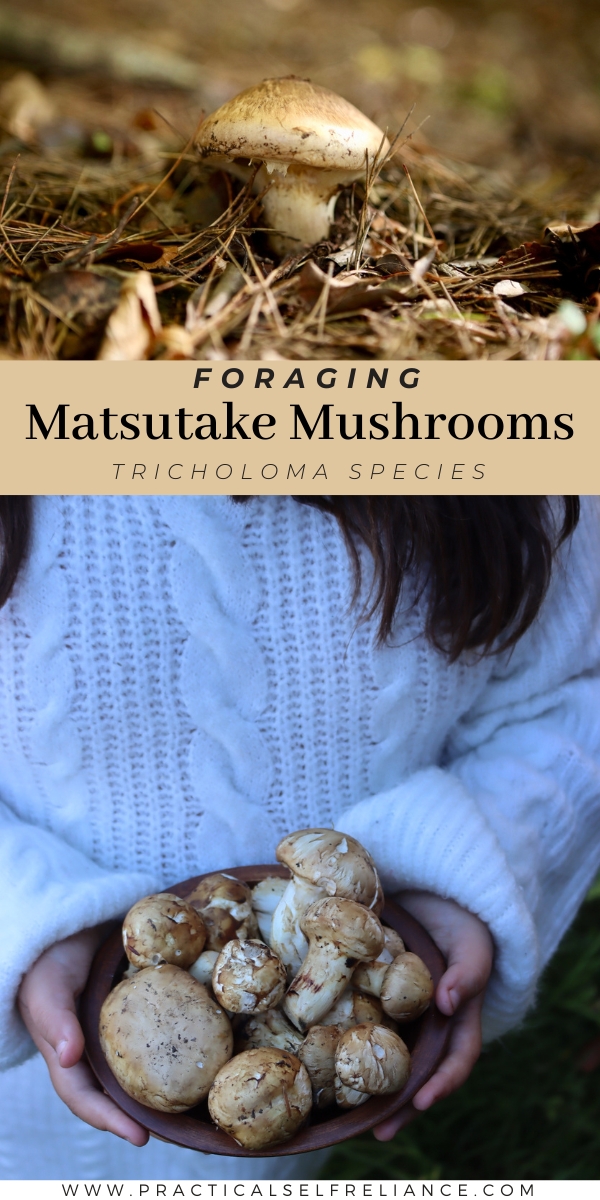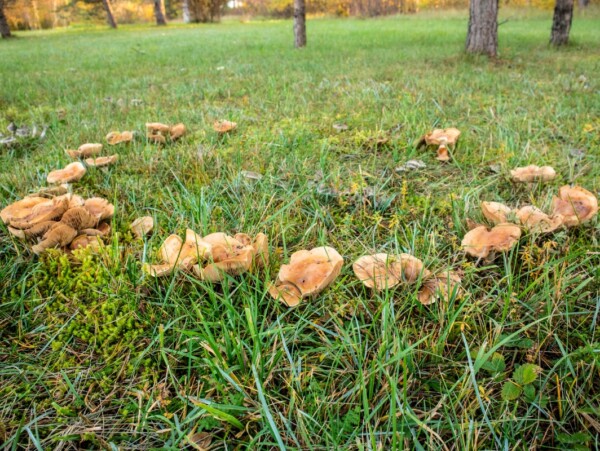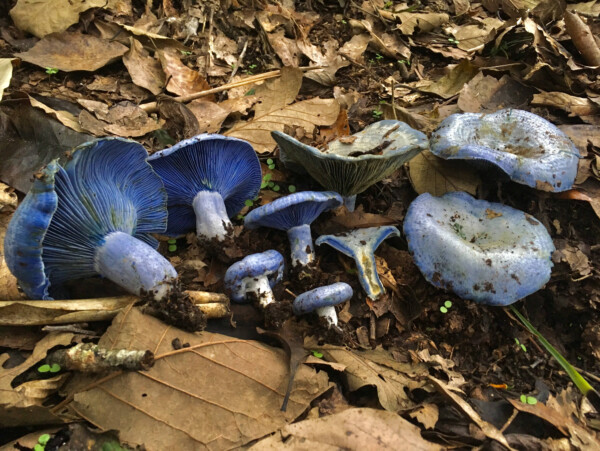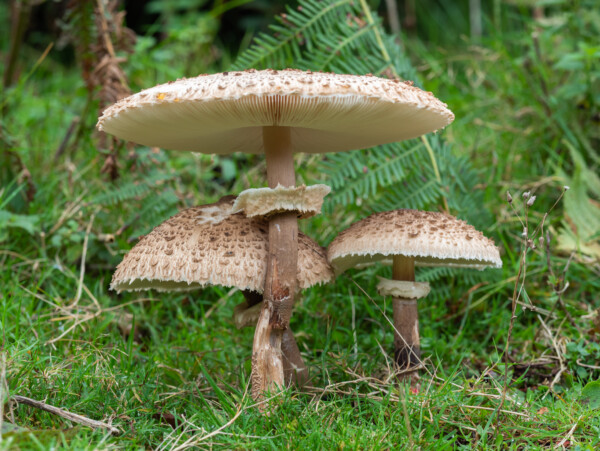Affiliate disclosure: This post may contain affiliate links. Please see our Privacy Policy.
Matsutake mushrooms are highly prized by foragers worldwide, fetching high prices due to their delicious taste and medicinal properties. While they’re expensive to buy, devoted foragers can find Matsutake in the wild, if they know where to look.
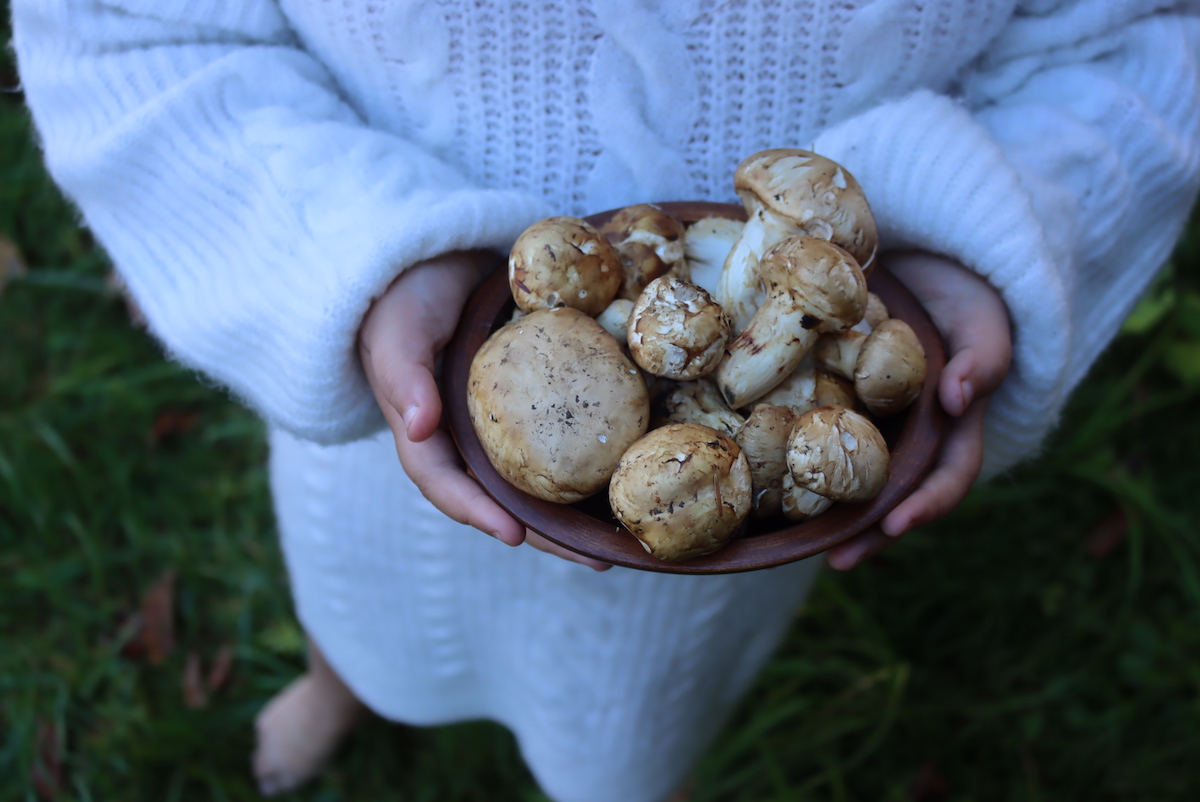
This article was written by Timo Mendez, a freelance writer and amateur mycologist who has foraged wild mushrooms worldwide.
Few foods live up to the lore of the legendary Matsutake mushroom. It’s a mushroom revered by Japanese culture, sought like gold by commercial pickers, and full of thrilling mythos to mushroom enthusiasts like myself. They are also pretty darn delicious when adequately prepared!
Matsutake is a rare and enchanting gem sparsely distributed around the world. It is atypically esteemed and sought after anywhere it grows. Known as the “King of Mushrooms” in Japan, it is considered the quintessential “taste of autumn” and responsible for an international industry worth hundreds of millions of dollars.
A single mushroom can be worth hundreds of dollars in Japan, and a single pound has been valued at well over 1,000 dollars! There’s a good reason why commercial pickers the world over eagerly pursue these expensive mushrooms. In less than 48 hours, Matsutake can be picked from a remote forest, flown across the globe, and sold at markets in Japan where it fetches these high prices. After all, the potent aroma of Matustake quickly declines in intensity within a few days of harvest.
It is this unique aroma that makes a case for the exceptionally high value of this mushroom. It is a flavor truly unlike any food. While often compared to cinnamon, pine needles, allspice, and other intense aromatics, none of these frankly do Matsutake justice. This being said, they are on the right track. Matsutake not only has a strong flavor, but it is a potent aromatic that perfumes food with pungent and fragrant flavor.
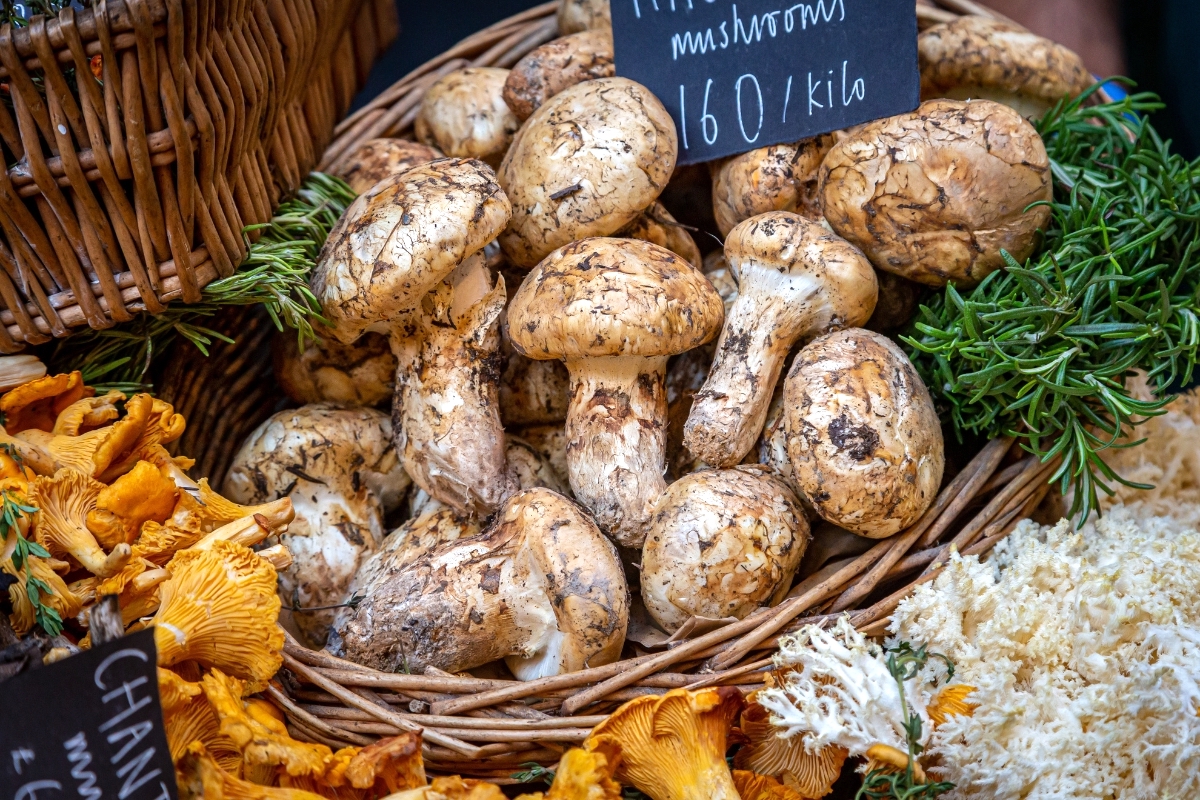
Yet, some people don’t like Matsutake. Its aroma is commonly compared to sweaty socks or dirt. Coined by the famous mycologist David Arora, “Sweaty socks and Red Hots Cinnamon Candy” is one of the classic flavor profiles used to describe Matsutake. While some folks might find it a bit irreverent, there is a hint of truth, like fine-aged cheese.
If they aren’t cooked right, you can’t blame the nay-sayers either. This isn’t your typical “saute with onions and garlic” type of mushroom. They require precise preparation to taste delicious; otherwise, they can be overpowering.
If you are lucky enough to be in the regions where Matsutake grows, you too can forage for this exciting mushroom. They might not be easy to find, and you might have to beat other pickers to them, but by doing your homework, they are attainable. Sometimes in abundance!
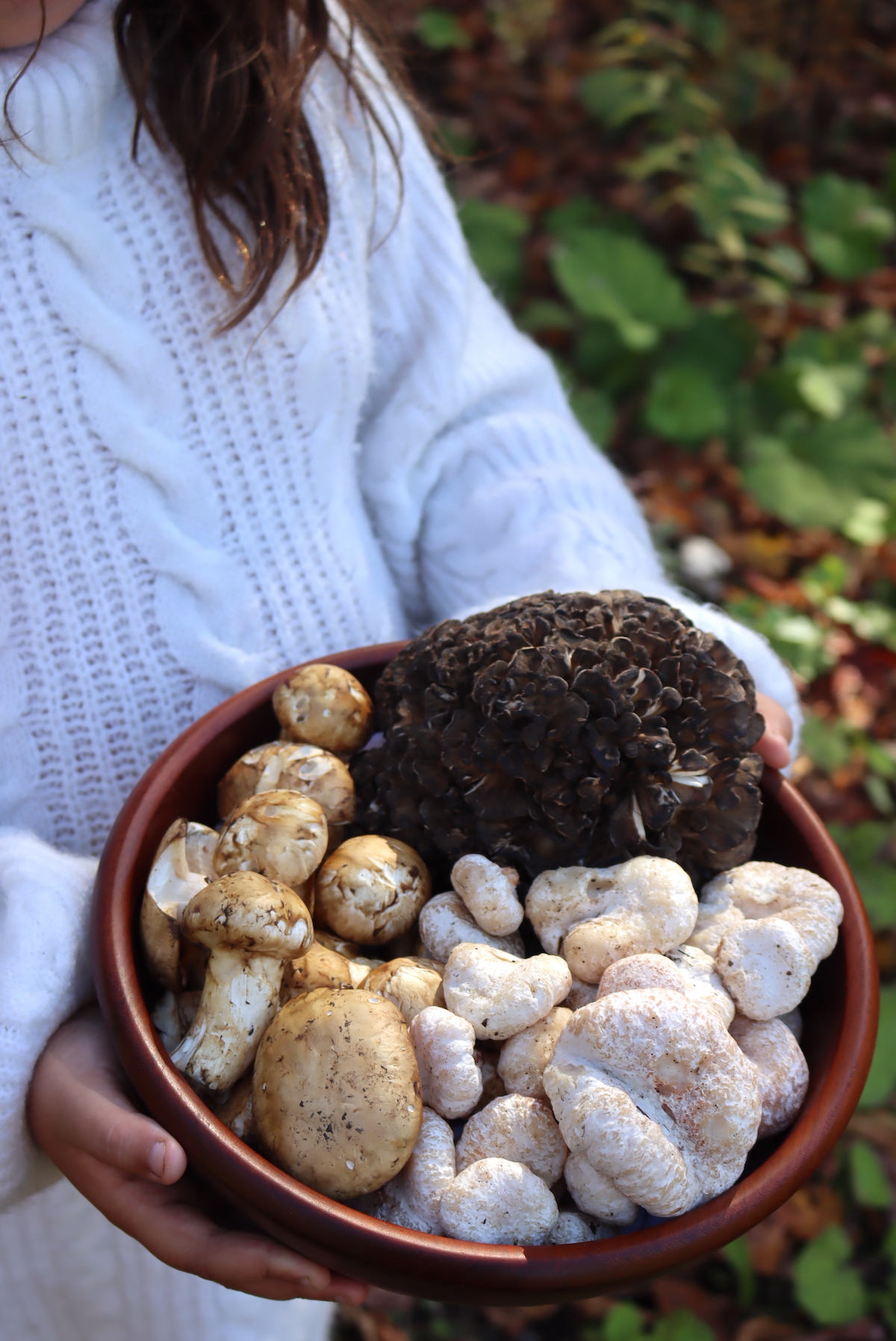
Ecology Of Matsutake Mushrooms
Before you go out searching for Matsutake, it is essential to understand a bit about its ecology. Mushroom foraging is, in fact, a bit of an ecological scavenger hunt, so understanding the ecology is crucial to know what clues to look for in your search.
Like many other gourmet mushrooms, Matsutake grows exclusively alongside trees, forming a symbiosis known as a mycorrhizal relationship. The name “Matsutake” translates to Pine Mushroom, a reference to it’s host-tree in Japan.
The mushrooms themselves grow from a root-like web of mycelium that dwells in the soil and forms these intimate ties to the roots of the trees. In the classic sense of a mycorrhizal relationship, trees act as hosts who feed the mycorrhizal fungi sugars in exchange for soil nutrients and other environmental services the fungus provides.
In North America, Matsutake associates with a variety of tree hosts.
Although not abundant in Eastern North America, it most notably occurs here with Jack’s Pine (Pinus banksiana) and a few other pine species. In Western North America, it is a bit more complex. Here it associates with various hardwood and coniferous species. The most important are Tan Oak, Hemlock, and Shore Pine or Lodgepole Pine (These pines are, in fact, different varieties of the same species). They are also known to occur with Ponderosa Pine, Red Fir, Manzanita, Douglas Fir, and Western Chinquapin, although it is unknown if all these are true hosts.
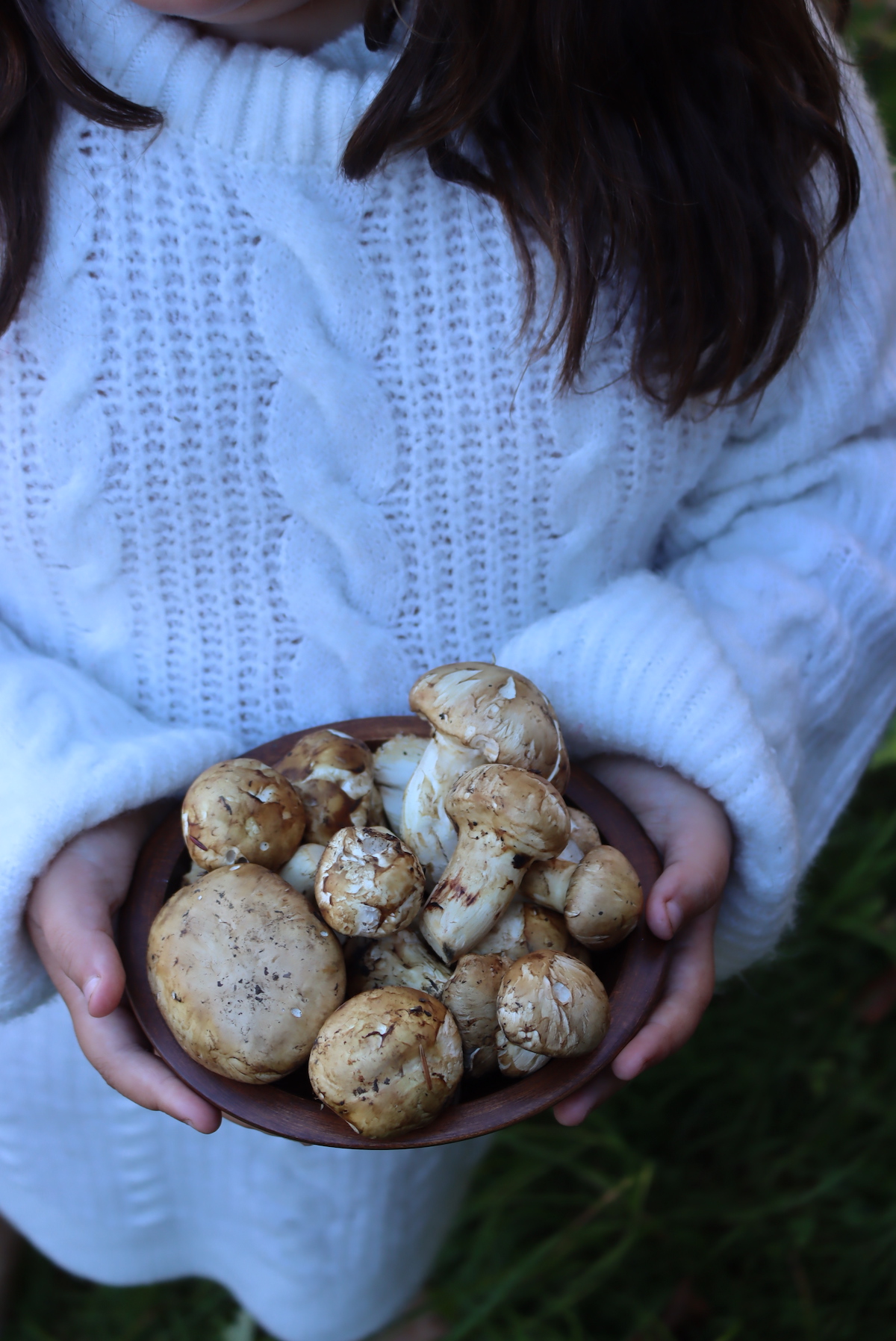
Matsutake tends to occur in low-nutrient sandy soils in most of their range. They may grow directly from barren soil, under leaf litter, or in mossy habitats with lichens.
When looking for Matsutakes, you will want to keep your eyes open for “flag mushrooms.” These are fully grown specimens easily seen rising above the forest floor. Once you find one, you will want to keep your eyes open for other immature specimens that may still be hiding under duff or dirt.
Small bumps on the leaf litter where mushrooms push up the duff are also essential to look out for. Some pickers carry small sticks to poke these suspicious bumps, sometimes known as “shrumps.”
Once you discover a spot, you can return every year to find Matsutakes growing from the same location, often with mushrooms fruiting only inches from where they occurred the year before.
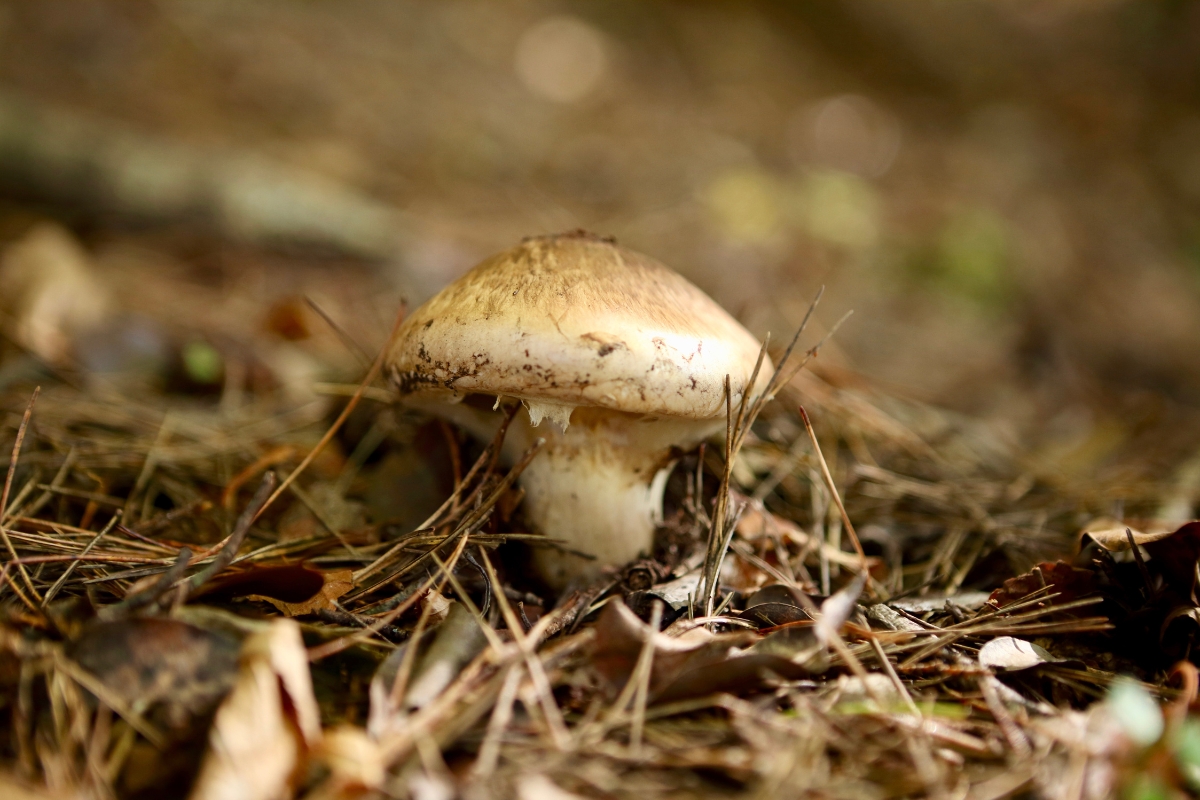
Matsutake Mushroom Species
There are a handful of closely related species colloquially known as Matustake. The species most prized in Japan is the “original” Matsutake, scientifically known as Tricholoma Matsutake. This species occurs in mountainous parts of China, Korea, and other parts of Asia. It can also be found in far northern European countries like Finland and Sweden. In North America, there are also three species of Matsutake. Two of these are commonly sought after by foragers, commercial pickers, mushroom enthusiasts, and gourmet chefs.
Below is a list of some currently described “Matsutake” species, broken into two groups based on their value to foragers. The first group is the most valued, and of those, the first two are common in North America.
As is the case with many mushrooms, there may be yet undescribed species that are currently classified under the existing names.
Most Valued Matsuke Species
- Western Matsutake (Tricholoma murrillianium) – From The Pacific Northwest of North America.
- Eastern Matsutake (Tricholoma magnivelare) – From Eastern North America.
- The True Matsutake (Tricholoma matsutake syn. Tricholoma nauseosum) – From Asia and far Northern Europe.
- Mesoamerican Matustake (Tricholoma mesoamericanum) – From Mexico and the Southwest United States.
- Turkish Matsutake (Tricholoma anatolicum) – From Turkey and surrounding regions.
Less Valued Matsuke Species
- Eastern Mexican Matsutake (Tricholoma colposii) – From eastern Mexico.
- Flase Matsutake (Tricholoma caligatum) – Likely a species complex with a cosmopolitan distribution.
- Fools Matsutake (Tricholoma bakamatsutake) – From China and Japan.
- Imitation Matsutake (Tricholoma robustum)
Where To Find Matsutake Mushrooms
Matsutake are not like Chanterelles, Boletes, Black Trumpets, and other cosmopolitan mushrooms. While they do occur in numerous parts of the world, their distribution is rather limited than these other species. They are only locally abundant in some bioregions, and outside of these specific geographic contexts, they can be rare or completely non-existent.
Matsutake In Western North America
Western North America is one of the parts of the world where Matsutake mushrooms are most abundant. This is particularly true for the Pacific Northwest, which includes northern California, Oregon, Washington, and British Columbia. The Matsutake that occurs here is the Western Matsutake (Tricholoma murrillianium), which for a long time was classified under the same name as the Eastern Matsutake (Tricholoma magnivelare). Many field guides and books still use the old name, but it has since been reclassified.
- Northern California and Oregon: Matsutakes here are often sought alongside Tan Oaks (Notholithocarpus densiflorus) as the primary host. For this reason, some colloquially know it as “Tan Oak Mushroom” in these regions. In these habitats, it may also occur with Madrone, Chinquapin, and Hemlock. They also occur directly along the coast with “Shore Pines” (Pinus contorta var. contorta) and farther east in more mountainous regions with lodgepole pine.
- Washington and British Columbia: They often occur with Ponderosa Pine, Douglas Fir, True Fir, Lodgepole Pine, and Hemlock. In coastal regions, it is not uncommon to find them hiding beneath or alongside Huckleberries. Here they often go by the name “Pine Mushroom” because of their frequent association with pine. They can also be found in the Canadian Rockies and up to Alaska with similar hosts.
- California: The known range in western North America extends as far south as southern California. Here they are scarce but can be found in Manzanita thickets mixed with Pine and Chinquapin. In the Sierra Nevadas, it can also be found with lodgepole pines.
- Colorado Rockies: They are very rare in the Colorado Rockies but enthusiastic foragers may find them growing with lodgepole pine between 9000-11000 feet.
- Southwestern United States: Matsutake is known to grow in high-altitude “Sky Islands” associated with Pine. It is a different species scientifically known as Tricholoma mesoamericanum, whose range mostly occurs in Mexico.
Pro Tip: In the west, Matsutake mycelium is parasitized by a plant known as the Candy Stick (Allotropa virgata) to which it is an obligate host. If you see this plant in the wild, you know to return to this exact spot during the Matsutake season!
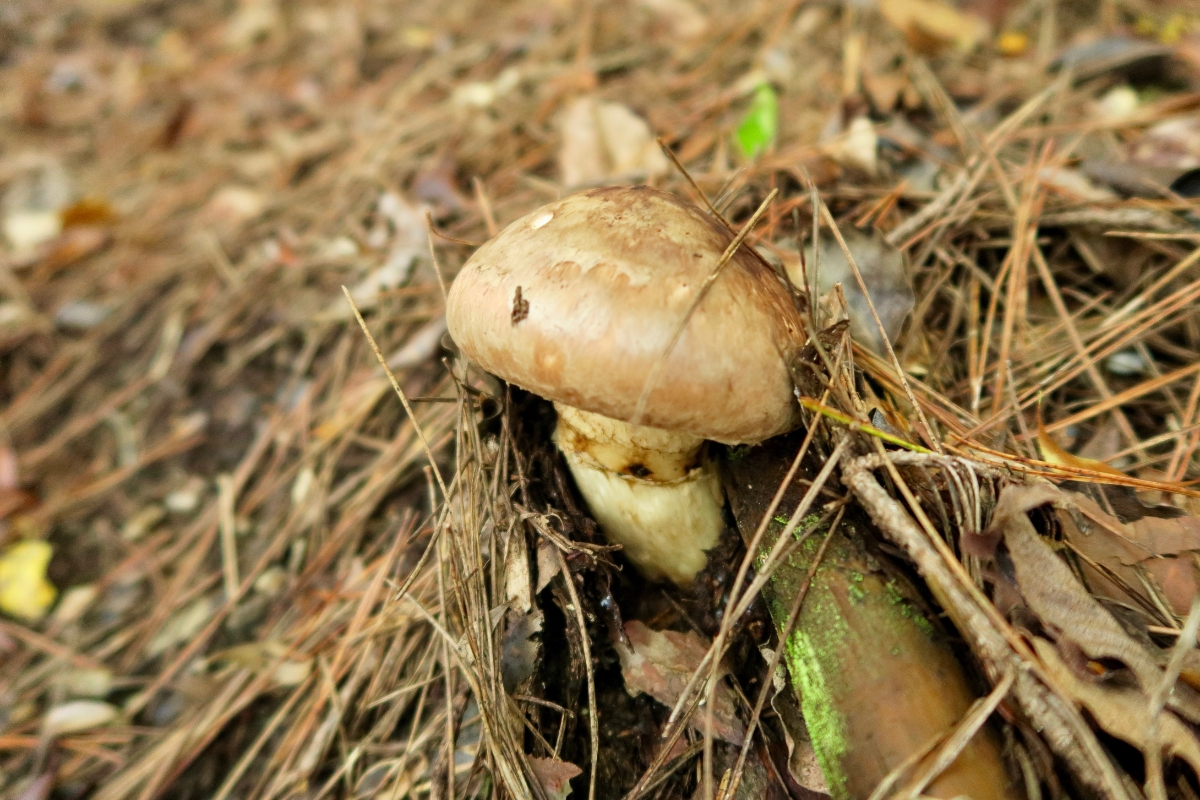
Matsutake In Eastern North America
Matsutake is much more scarce in eastern North America, but it can be found by committed mushroom seekers. Here they are most commonly found with pine species, most notably Jack Pine (Pinus banksiana). Other hosts include Red Pine (Pinus resinosa), Pitch Pine (Pinus rigida), and eastern Hemlock (Tsuga canadensis). Remember to check areas with sandy soils, sloped topography, moss or pine duff, and of course, the tree species previously mentioned.
- North Eastern United States: They are mostly found in mountainous parts of the northeast, particularly in Vermont, New Hampshire, Massachusets, Maine, and Connecticut. They are pretty uncommon in these regions, but if you spend enough time scouting, you can find some spots. Although rare in this region, this species was originally described in New York State!
- Midwestern United States: While uncommon, some skilled hunters find them around the great lakes region, such as in northern Michigan and northern Wisconsin.
- Appalachian Mountains: Matsutake has been found in the Appalachians as far south as North Carolina! This said, that is a completely unprecedented find, and they are extremely rare in the Appalachian mountains. It is unlikely to find them any farther south than New York state.
- Eastern Canada: Matsutake can be found in southern Ontario, Quebec, and Nova Scotia. According to the late mycologist Tom Volk, Quebec has some relatively prolific regions with Matsutake that allow for a productive commercial harvest.
Other Regions Where You Can Find Matsutake
No matter where you hunt for mushrooms, it is important to have proper permission from the local authorities. This is especially true if you are foraging internationally, and even more so for a valuable resource like Matsutake, which may be an important source of income for rural communities.
- Europe – The “original” Matsutake which occurs in Japan can also be found in far Northern European countries like Finland and Sweden. A false Matsutake, Tricholoma caligatum, is also found in Mediterranean Europe. The latter species is considered bitter and not of culinary value, although it is regarded as a delicacy on the island of Cyprus where it is pickled.
- Asia – Matsutake occurs in mountainous parts of Asia, notably Korea, China, and Japan. It is associated with Red Pine (Pinus densiflorus) and other conifer species.
- Mexico and Central America – Matsutake can be found here in mountainous regions associated with Oak and Pine.
When is Matsutake Season?
Matsutake largely occurs in the fall, coinciding with cooling temperatures and rainfall.
- Eastern North America – Matsutakes occur from August to November, with peak season usually occurring in early October.
- California and Pacific Northwest – In western North America, Matsutake occurs from September to about January, with peak season occurring around October. At the southern portion of its range, the season typically starts later and can last into February. Occasionally they can be found in the spring, but this is rather rare.
- Colorado and South Western United States – Matsutake season here occurs with the summer monsoon season from July to September.
- Europe and Asia – In Finland and Europe Matsutake season occurs in late summer to early fall, from July to late September. Peak season is around August. This is roughly the same for Asia but may differ for certain geographic regions.
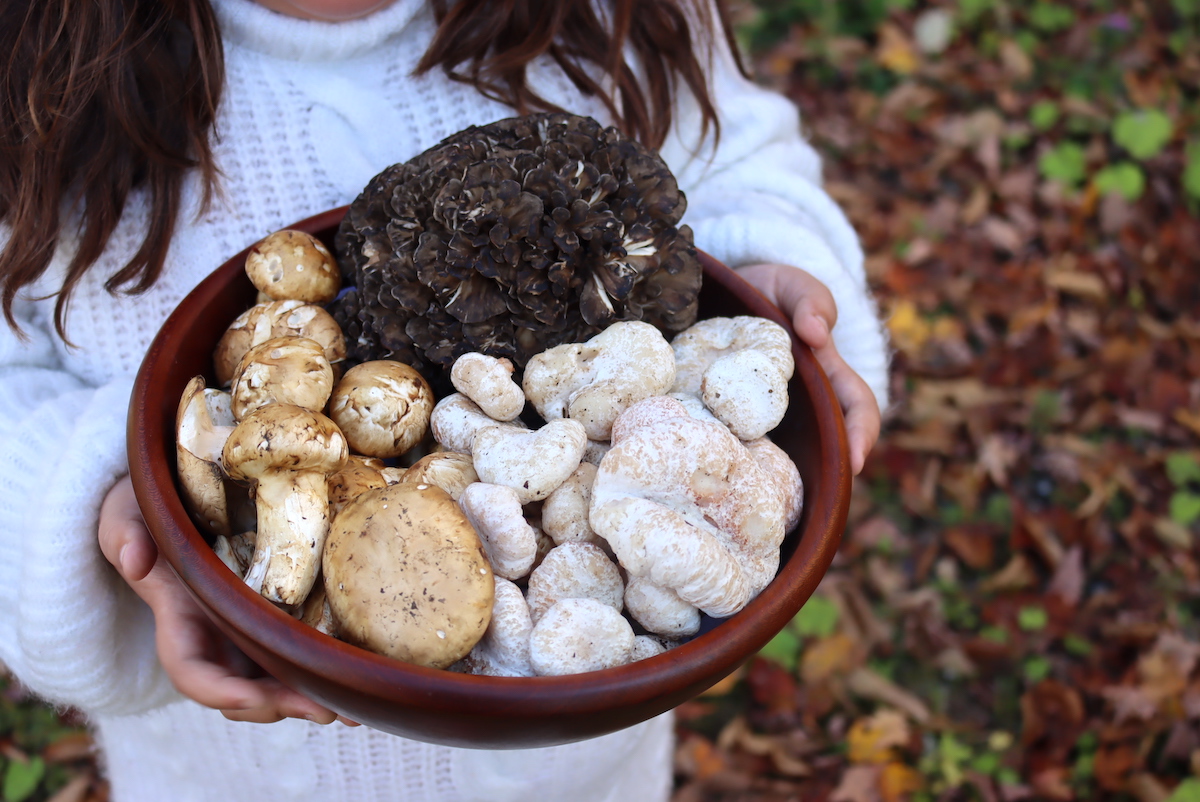
Identifying The Matsutake Mushroom
Be aware that while identifying matsutake mushrooms isn’t too difficult, they do have some toxic look-alikes. Therefore, they’re not considered beginner mushrooms, and you should exercise caution and always be 100% sure of your identification. If there is any doubt, double-check with an expert, or throw it out!
Matsutake is a cap and stem mushroom about 10-20 cm (4-8 in) in size that is white with white to brown fibrous scales on the cap and lower stem.
Young specimens are small and have a spherical cap that slowly umbrellas out as the mushroom matures. The cap margin is inrolled and goes convex as it matures. The cap has a sheath, known as a partial veil, connecting the stem that protects immature gills. In well-preserved specimens, this stays as a ring on the cap stem.
Above the ring the stem and gills are white. The cap stem usually gently tapers down near the end and is seldom bulbous. The texture is dense, rubbery, and tough.
Lastly, the most distinct thing about this mushroom is, of course, the smell. If you’ve ever eaten or smelled Matsutake before then, the smell is an instant reminder of the mushroom’s identity. It’s a sweet, cinnamony, fragrance that smells like nothing else.
Matsutake Identification Guide
- Strong, funky, and sweet odor.
- White to brown fibrous scales.
- Rubbery, dense, and stringy flesh.
- Tough cottony ring.
- Stem that gently tapers towards the end. No bulbous base.
- Young specimens with a spherical cap that umbrellas out as they age.
Matsutake Look Alikes
- Amanita smithiana and Other White Amanitas – Amanitas can be deadly, and some resemble Matsutake to the untrained eye. The main difference is that Amanitas usually have a bulbous base (make sure to dig it out properly from the base), a fragile ring, and some have white powdery reminisce on the cap. Matsutake is usually denser, with rubbery and stringy flesh. Amanita has more delicate flesh that easily breaks into pieces. Amanitas also have little to no smell.
- False Matsutake (Tricholoma caligatum) – This mushroom is usually smaller, bitter, less dense, and with a less fragrant odor. It usually has much darker brown scales not present in the American matsutakes.
- Imperial Knight (Catathelasma) – Catathelasma is strongly reminiscent of Matsutake but with no odor and a larger stalky stem. The stem is much more intensely tapered towards the base. It also has a double ring compared to the single ring seen in Matsutake.
How To Harvest Matsutake
Like all wild foods, harvest Matsutake with care and respect for the natural environment in which it grows. Do not litter and tread lightly to avoid soil disturbance. Consider that this is not only a valuable resource to the forest ecology, but it may also be an important source of income for rural and underprivileged communities (as is the case with many commercial mushroom pickers).
Finding a patch of Matsutake is exciting, but before you go harvesting, mushrooms take the time to further observe the patch. Examine how many mushrooms there are and check small bumps in the leaf litter to find any that may be hiding. As an act of respect, leave at least 20% of the mushrooms so that they can further reproduce and feed the local fauna. While the young specimens are the most commercially valued, harvesting older mature mushrooms and leaving the younger ones is believed to promote reproductive success.
Matsutake also tends to grow in very sandy soils. For this reason, it is recommended to instantly clean each mushroom while out in the field before placing it in your basket. This prevents the sand from rubbing in and getting into the gills, which are difficult to wash.
Lastly, make sure to have proper permission to forage Matsutake. It is possible to get mushroom-picking permits in National Forests, while other wildlands may require other means of authorization. Matsutake is a competitive resource, and it is not unheard of for rangers to patrol during Matsutake season.
How To Use Matsutake Mushroom
No matter how many mushroom recipes you have, most of these need to be set aside when it comes to Matsutake. This is not your typical mushroom by any means, and it requires proper preparation to taste good. It’s almost better to think of Matsutake as an aromatic herb that can infuse its flavor into other less-favorable foods. For almost every recipe, it is good to slice the Matsutake as thin as possible or shred it by hand.
For example, one of the most classic recipes is “Matsutake Rice.” This is typically made by adding dashi (Japanese soup stock), soy sauce, sake, and salt to the water you use to cook rice. You then add some thin slices of Matsutake, place a lid on the pot, and let it cook. The Matsutake flavor infuses right into the rice, making it all taste delicious.
I often do it with vegetable stock instead of dashi, and I enjoy adding the Matstake only for the last 10-15 minutes of cooking. You can also make Matsutake Fried Rice by thinly slicing or shredding it and adding it in the final 10 minutes of cooking.
Matsutake also goes great in brothy soups like Ramen or Miso. You could also easily add some to your favorite vegetable or chicken soup recipe, just be ready for the flavor to be transformed! It is best not to pair it with heavily flavored broths as this may cause the flavors to conflict, or it may overpower the Matsutake flavor. Other ideas include Matsutake dumplings, empanadas, tamales, and noodles.
One popular recipe, which I haven’t tried, is marinated and roasted Matsutake. In this case, Matsutake is thinly sliced and marinated in rice wine vinegar, sake, soy sauce, and chili flakes. It is then roasted over coals until well done.
Preserving Matsutake
The best ways to preserve Matsutake are either in pickles or frozen. Dehydrating Matsutake results in the loss of fragrance and thus is not recommended.
- Matsutake Pickles: Matsutake Pickles are absolutely delicious and one of my favorite ways to eat Matsutake. To make these simply cut Matsutake into slices and steam or parboil for 2-3 minutes until they are sufficiently cooked. You can use your favorite pickling recipe or make a brine with rice wine vinegar, sake, soy sauce, garlic, pepper, and a bit of sugar.
- Freezing Matsutake: To freeze Matsutake, it is recommended to thinly slice them, place them in a pan with no oil, and then cook until the water comes out of the mushroom. Let this cool and freeze the mushroomy-watering concoction to use whenever needed. Do not freeze uncooked Matsutake, as this will result in a slimy unpleasant texture!
Mushroom Foraging Guides
Looking for more than just Matsutake this season? I have plenty of mushroom foraging guides to keep you busy out in the woods!
- Morel Mushrooms
- Chaga Mushrooms
- Birch Polypore
- Tinder Polypore
- Witches Butter Mushrooms
- Puffball Mushrooms
- Shaggy Mane Mushrooms
- Reishi Mushrooms
- Turkey Tail Mushrooms
- Dryad’s Saddle
